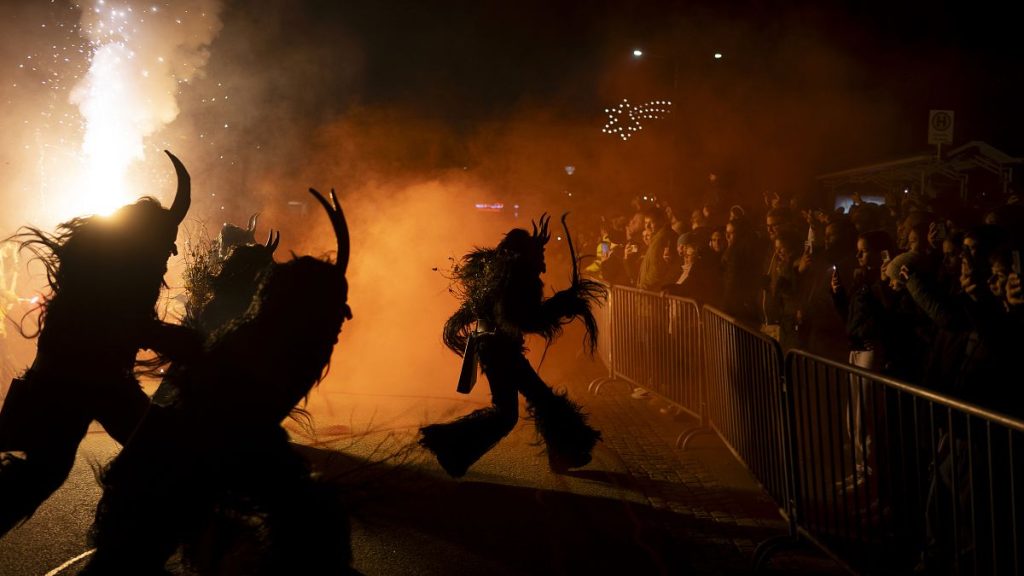In Austria and parts of Germany, the traditional figures of Saint Nicholas and the Krampus have become focal points of both festive celebration and growing concern over safety during Krampus parades. These events, which occur annually around the first week of December, aim to illustrate the dual nature of holiday traditions: rewarding good behavior while punishing the naughty. Saint Nicholas embodies benevolence, distributing gifts to well-behaved children, whereas the Krampus, a horned and scary creature, serves as his dark counterpart, brandishing a birch rod to frighten those who misbehave. Yet, over the years, the joy of these traditions has been marred by chaos and controversy, raising pertinent questions about the implications of festive customs, particularly in relation to violence and societal attitudes.
The Krampus parades, established to carry on these age-old traditions, see participants dressed as the Krampus march through streets, often creating a raucous atmosphere intended to scare onlookers. However, rules established to ensure safety—such as the prohibition of excessive force and restrictions on where participants can strike—are frequently overlooked. For example, a report in Die Zeit highlighted that although there are guidelines in place for performers, many individuals often disregard them, resulting in injuries to onlookers and performers alike. The tension during these parades can escalate rapidly, leading to frightening confrontations that challenge the very essence of what these traditions originally sought to represent.
Recent events underscore this dark side of the festivities. Reports of violence have emerged from various parades across Austria, including a notable incident in Tyrol where chaos erupted, leaving numerous people injured. Police investigations have been launched following cases where bystanders were harmed, including one incident where a woman required hospitalization after being struck with enough force to cause severe swelling to her hand. Other injuries highlight the precarious nature of these gatherings, signaling a need for increased scrutiny regarding public safety during such events. With numerous incidents being reported, the question arises as to how these traditions can be preserved while also respecting community welfare.
Further complicating the narrative of holiday traditions in the region is the alarming trend of violence disguised as cultural practices, manifesting in various forms beyond the Krampus festival. In a recently highlighted example from the North Sea island of Borkum, the “Klaasohm” custom sees men in fur masks targeting women during an annual parade. Despite this practice being seen by many locals as an important part of their identity, it has drawn attention for its objectification and humiliation of women involved. Victims have reported feelings of pain and degradation, while some females express societal pressure to participate in what is perceived as a time-honored tradition.
Interestingly, protests have emerged from women advocating for the continued existence of the Klaasohm festival, insisting that it is an integral aspect of local culture. This has sparked discussions about cultural preservation versus the necessity of evolving traditions to promote safety and respect. With public awareness growing regarding the nature of such events, there have been concerted efforts from law enforcement agencies to oversee these celebrations more closely, emphasizing the need for a balance between maintaining traditional practices and ensuring the safety of all participants.
In conclusion, the juxtaposition of festive cheer against a backdrop of violence and safety concerns has called into question the appropriateness of certain longstanding customs. As communities reflect on how to honor their cultural heritage, there is a pressing need to reassess the methods through which these celebrations are conducted. The potential for injury—both physical and emotional—must be weighed against the desire to keep such traditions alive. It is imperative for stakeholders, including local authorities and communities, to engage in meaningful conversations about reformed practices that uphold safety while simultaneously respecting cultural traditions, ensuring that festive joy does not come at the expense of public well-being.














